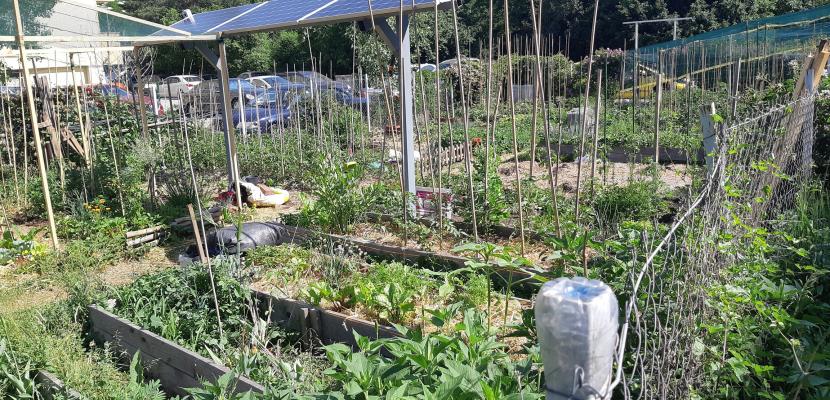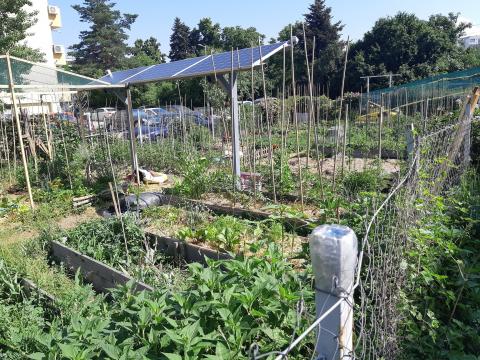
Community vegetable garden 1 revitalized parking lots in Sofia

About this good practice
Finding a free and citizen-friendly place for urban farming is a task that is in constant competition for limited urban sites with other parties – housing and office builders, users of parking lots, etc.
Community vegetable garden 1 is an example of how a site in Sofia that was contaminated by construction waste and used as unregulated parking space becomes a small urban oasis with a growing community of urban gardeners.
With total area of 250 m2, the construction of the garden was initiated by the Initiative for the Development of Urban Agriculture in Sofia and Gorichka Association. Volunteers were also involved at all stages of the garden creation. The terrain was offered for rent by a municipality-owned enterprise at the Municipality of Sofia.
To revitalize the former parking lots the contaminated soil was removed and clean soil that was dredged from a construction building site was brought over. Infrastructure like water and electricity supplies, construction of fence and plotting were also in the to do list. The biggest concern to start and sustain the garden was to communicate all benefits to the residents, whose parking spaces are taken over for cultivation. After a series of face-to-face meetings, the neighborhood embraced the idea. At one of the initial events, 85 people took part and as a result all of the plots got distributed for organic urban farming.
A nominal fee is collected for participation in the garden, which covers operational and maintenance costs.
Expert opinion
Resources needed
The budget to launch the garden is EUR 7K. The amount covers all infrastructure except the solar system that was donated by a company. Securing funds by citizen initiatives was a difficult task, but large private and public organizations have been involved, including the French Embassy in Bulgaria.
Evidence of success
The garden has been operating successfully since the summer of 2019, and those willing to join significantly exceed the available plots. There is a waiting list that is constantly growing.
For the participants and the people of the neighborhood, the benefits of the garden go far beyond the production of clean food – it is a place for a number of social, educational and entertaining events
Potential for learning or transfer
This practice is a typical example of the great efforts that should be made by citizens and volunteers to build a community urban garden. The founders of the garden go through a number of obstacles, but their efforts paid-off. The practice provides a good example of how the good management and attraction of volunteers, private funding (often necessary for initial investments, which are the largest) and municipality terrain can turn a disadvantaged site into a place that improves urban environment, builds active community and mitigates climate change effects. It serves as an example that can be multiplied by anyone interested, e.g. group of citizens, municipalities, businesses.
Further information
Good practice owner
You can contact the good practice owner below for more detailed information.

